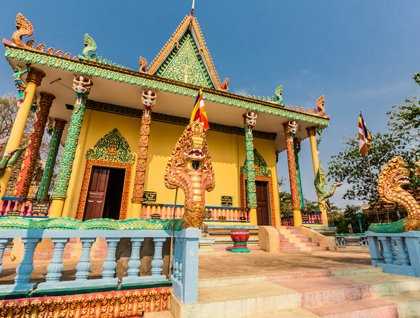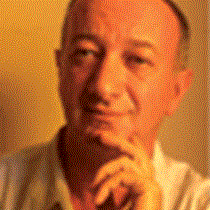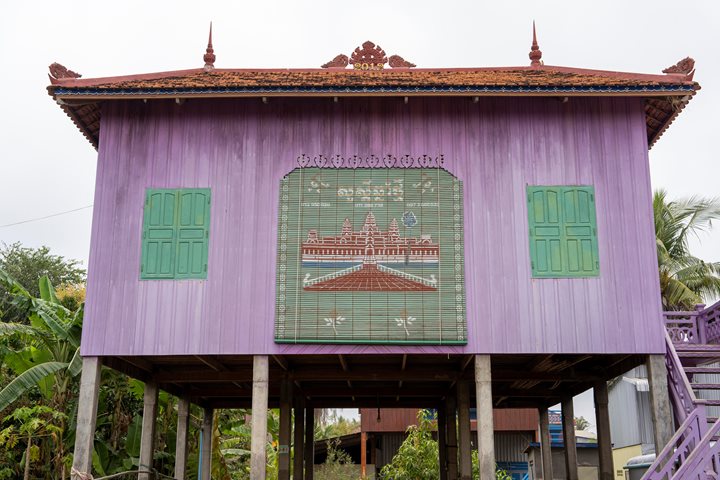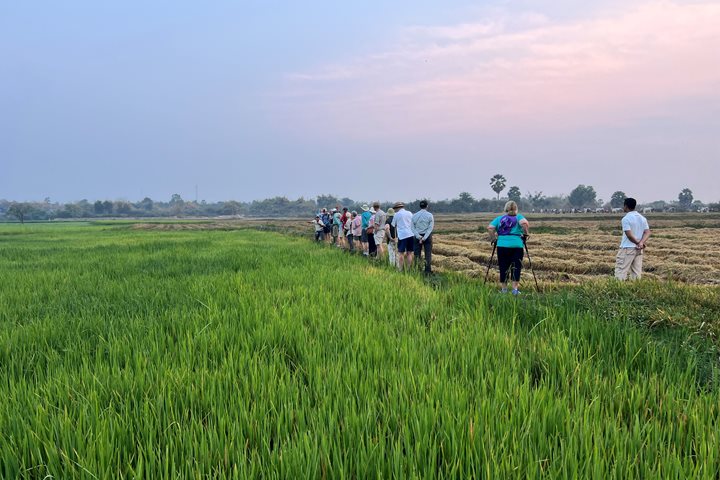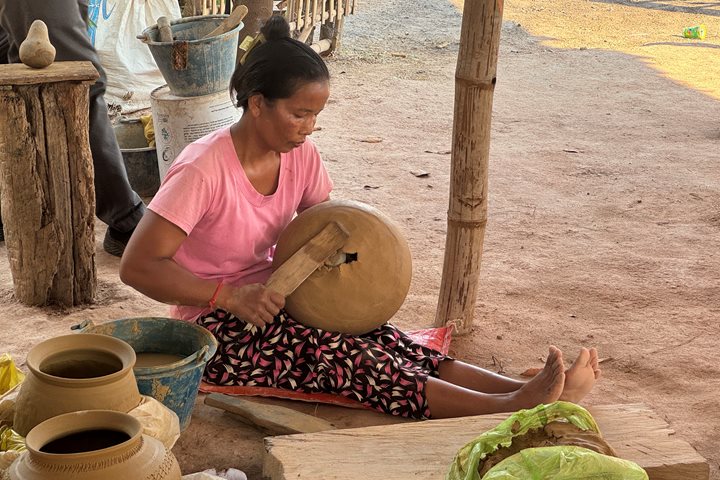After the greatness of Angkorian civilization and its imposing monuments, the time had come to discover a more intimate version of Cambodia.
The first part of the day was dedicated to the understanding of Theravada Buddhism, the current official religion of the kingdom of Cambodia. Wat Hanchey was chosen for this introductory session: the 303 steps were reserved to volunteers only, while the overwhelming majority could enjoy another essential feature of Cambodian transportation, the Moto Dup.
Wat Hanchey displays all the most interesting characteristics of the Mekong banks monasteries: a colorful syncretism where a Shiva 7th century small temple is placed side by side with the main modern Theravada pagoda and the other buildings of the monastery, such as the monks’ cell. The slopes of the surrounding hills were covered with traditional Chinese graves.
From the first days of the travel, Cambodian Theravada Buddhism was but one of these abstract and reassuring –isms amongst Hinduism, Shivaism... Now everything is a matter of astonishment and questions come from all sides. Our experienced guides proved they were up to the task by answering or anticipating the questions about the use of the words “pagoda” and “temple,” the colors of the Buddhist flag designed in Sri Lanka, and the deliciously kitsch assortment of tropical fruits made of concrete. A dialogue with a young monk allowed us to measure what the practice of Buddhism implies in the Cambodian everyday life.
The opportunity to put everything into practice was offered on the Jahan at 10:30 a.m. when two monks and an Achar (a layman in charge of the ritual of Buddhist ceremonies) performed a blessing ceremony. A translation of the prayers in Pali (Theravada sacred language) and in Khmer allowed us to understand the deep nature of a Khmer Buddhist ceremony.
Our first very local approach of the Mekong was completed in the afternoon while Barry Till, curator of Asian art, delivered a lecture, “The Mighty Mekong.” He discussed its history, amazing landscapes, source of life for millions of people and the concern for its future as dams are being built and threatening the very existence of the Mekong itself.
As the Jahan traveled down south, the rest of the afternoon was dedicated to discovering Angkor Ban, a little village on the banks of the Mekong. It was an excellent introduction to the Mekong banks: daily life with beautiful square-shaped houses on stilts, a temple with the usual kitschy display of colors, and slender cows which give us an idea of how wealthy the village is.

